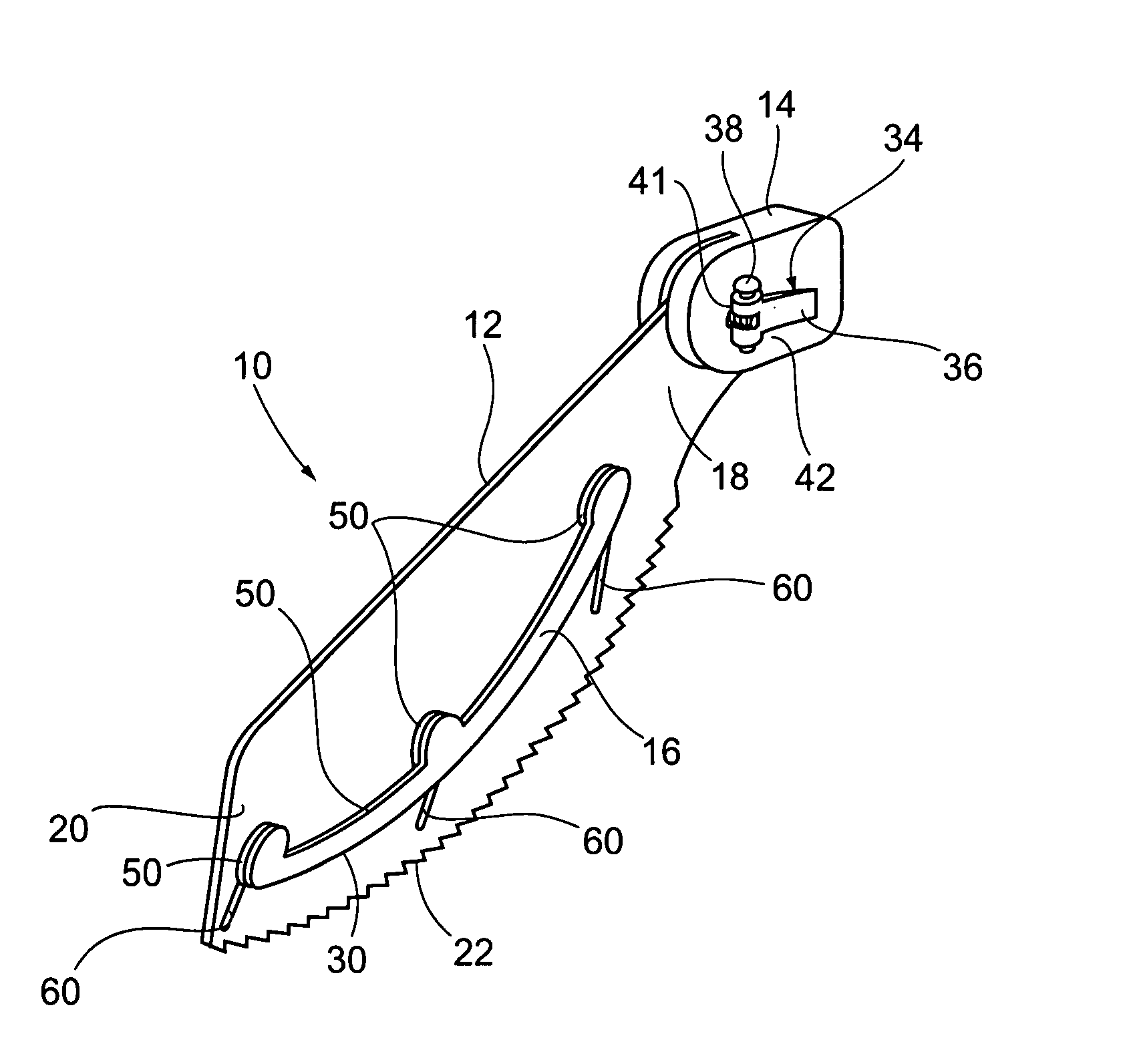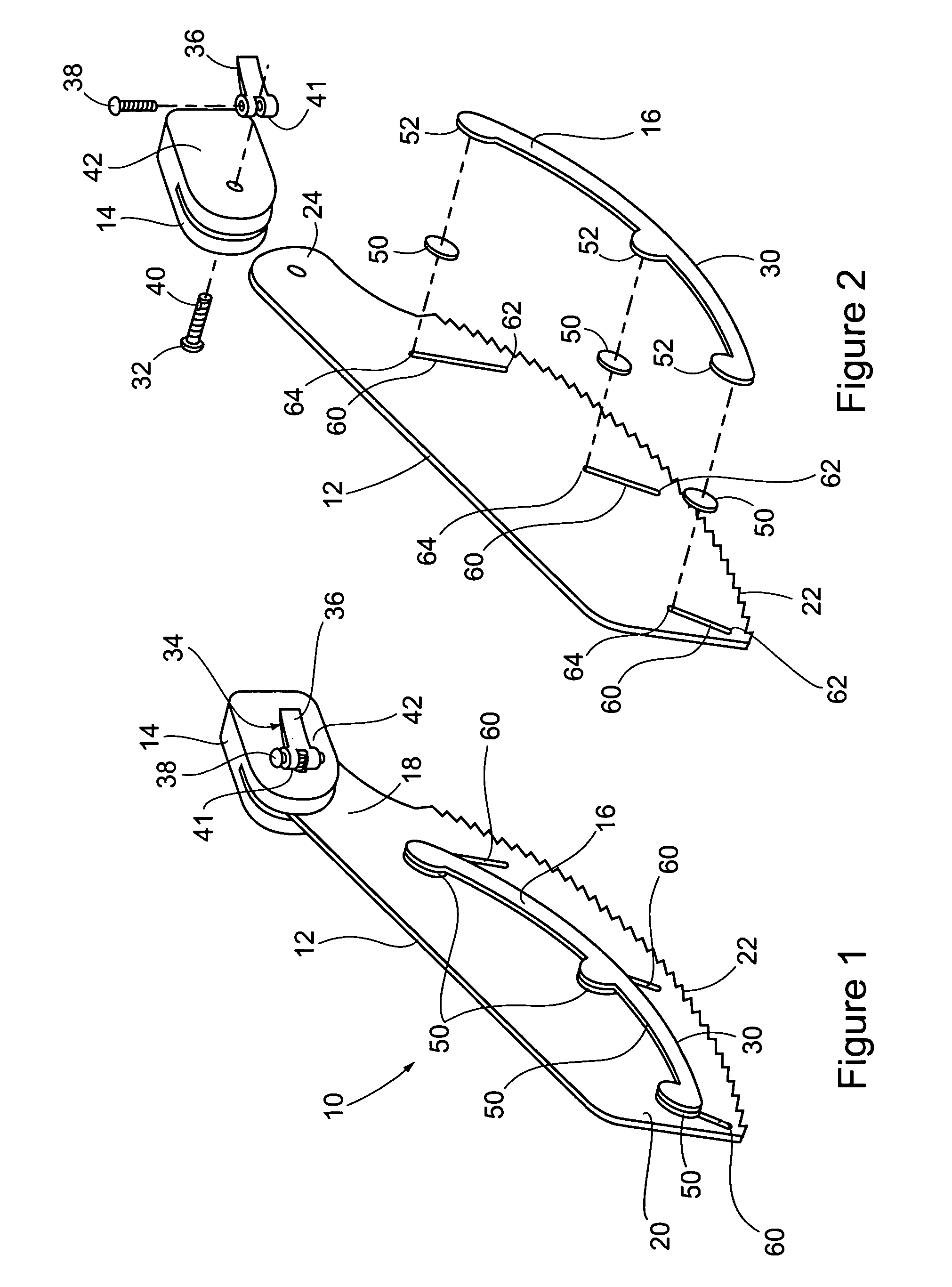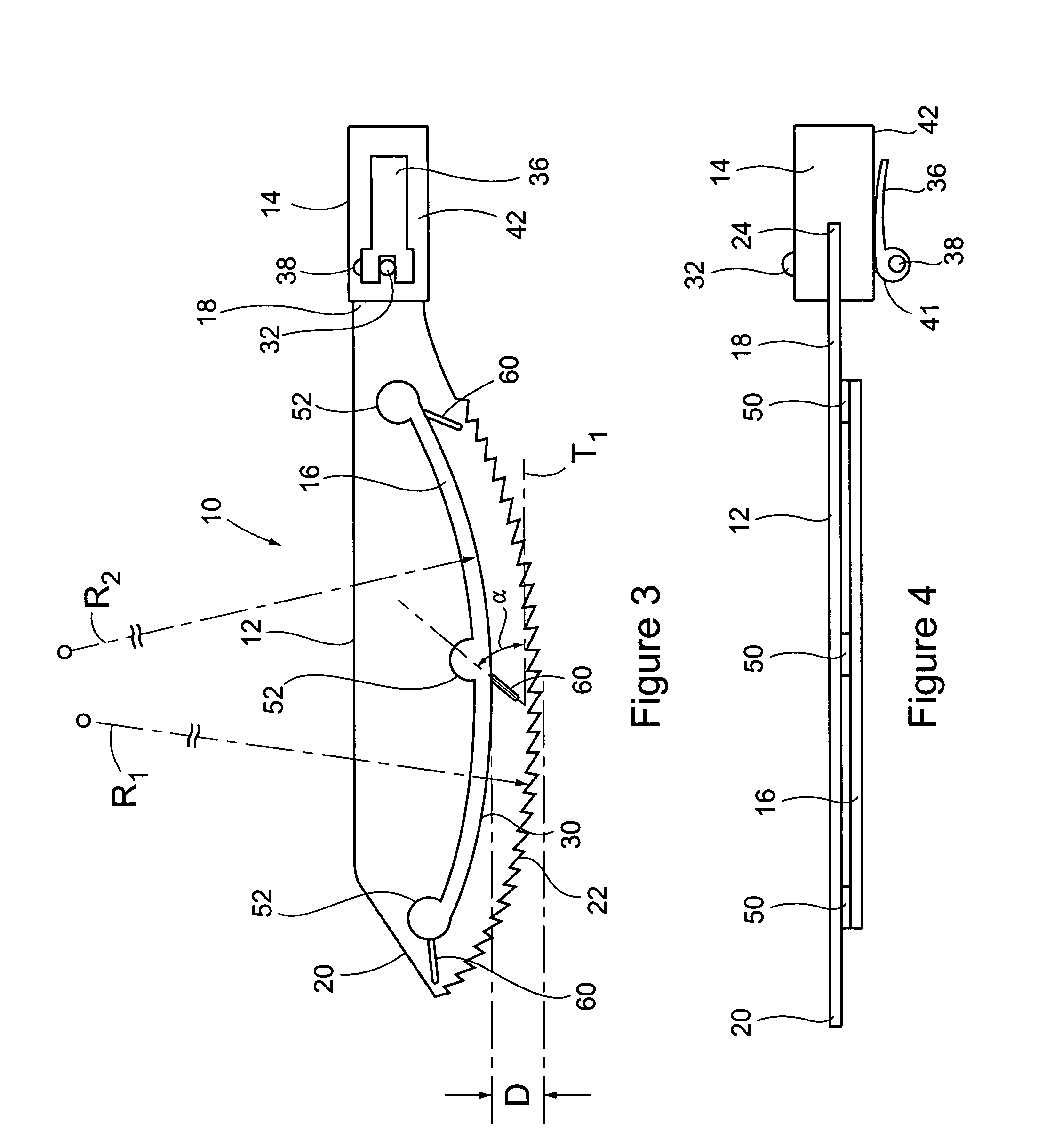Saw
- Summary
- Abstract
- Description
- Claims
- Application Information
AI Technical Summary
Benefits of technology
Problems solved by technology
Method used
Image
Examples
Embodiment Construction
[0017] A saw of the present invention is represented in its entirety in FIG. 1 by the reference numeral 10. In general, the saw 10 comprises a saw blade 12, a handle 14 and a depth control guide 16. The saw blade 12 is generally planar and has a proximal end 18 and a distal end 20. Preferably, the blade 12 has an arcuate cutting edge 22, which extends along the saw blade between its proximal and distal ends. As best shown in FIG. 2, the proximal end 18 of the blade 12 includes a shank portion 24. The handle 14 is adapted for hand-engagement by a user (not shown). Preferably, the handle 14 and the shank portion 24 of the blade 12 are pivotally connected to one another in a manner to permit pivoting movement of the blade 12 relative to the handle 14 in a plane of the blade 12. The depth control guide 16 comprises an arcuate depth control surface 30, which is preferably generally perpendicular to the plane of the saw blade 12. As explained hereinafter, the arcuate depth control surface...
PUM
| Property | Measurement | Unit |
|---|---|---|
| Length | aaaaa | aaaaa |
| Force | aaaaa | aaaaa |
| Angle | aaaaa | aaaaa |
Abstract
Description
Claims
Application Information
 Login to View More
Login to View More - R&D
- Intellectual Property
- Life Sciences
- Materials
- Tech Scout
- Unparalleled Data Quality
- Higher Quality Content
- 60% Fewer Hallucinations
Browse by: Latest US Patents, China's latest patents, Technical Efficacy Thesaurus, Application Domain, Technology Topic, Popular Technical Reports.
© 2025 PatSnap. All rights reserved.Legal|Privacy policy|Modern Slavery Act Transparency Statement|Sitemap|About US| Contact US: help@patsnap.com



